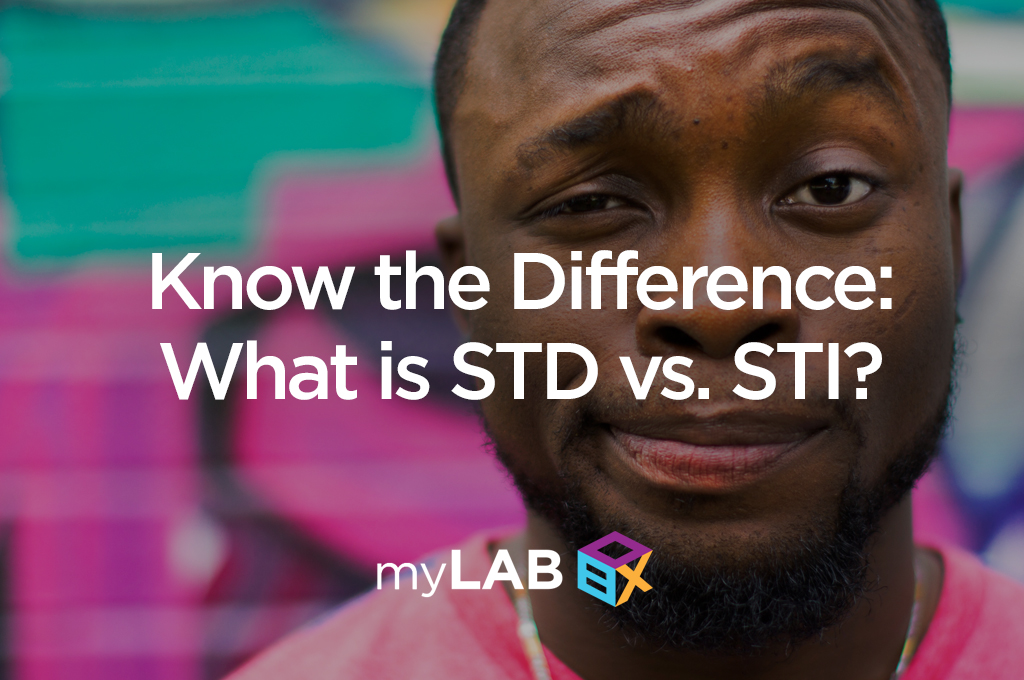What is STD vs. STI?

| ❖ Free physician consultation ❖ Mail-in kits for home use ❖ Test in just 5 minutes ❖ Lab results in 2-5 days ❖ 100% pain free ❖ Enjoy free shipping |
To Order By Phone Click Here (800)856-9522
What is “STD”? What is “STI”? You may have heard these terms in relation to your health, but do you understand the difference between the two? This can seem tricky, but we can help!It’s All In The Wording: What is STD vs. STI?
In short, “STD” stands for Sexually Transmitted Disease. “STI” stands for Sexually Transmitted Infection. At first, these two abbreviations might seem like simply a difference in wording. In reality, it’s slightly more complicated. The two are quite similar, but they not completely identical. The term STD has been a commonly used classification for ages, but times are changing. The medical community now prefers to use the term STI. It is a more inclusive term. A sexually transmitted “infection” covers a great many health situations, whereas “STD” refers more specifically to “diseases.” This term may not include everything that you should be testing for.How To Differentiate Between What is STD and What is an STI:
Like the name states, an STI is the earlier stages of an infection that is usually transmitted via sexual activity. Often this is the tip of the spear before an impending sexually transmitted disease. STIs occur when a virus or microbe first enters your body and begins to multiply. When the infection starts to attack the body and produce specific symptoms, it has advanced into “disease” territory. A person may be infected and able to transmit this infection to others… but it’s possible that they’ll never show a visible symptom. The term “STD” has been used for a long time to cover any form of illness that typically comes from sexual activity. In the past, it was called a “venereal disease.” More recently, we’ve begun to refer to these common ailments as sexually transmitted infections. Since all STDs start out as STIs, this tends to be a more accurate description. Having an STI means that an individual has an infection, but it has not yet developed into a disease.A “What is STD” Example: The Clap
Gonorrhea, or “the Clap” is a great way to examine the “what is STD vs. STI” question. Typically, when a person is infected with gonorrhea, they may not have any visible symptoms. She is a carrier of the virus, but does not technically have the disease yet. If she develops a case of pelvic inflammatory disease as a result of the Clap, then she now has an STD.What’s in a Name?
Many of our readers may have noticed that several of our ads and blog posts use these two terms interchangeably. There is a reason for this. Over the years, the term “STD” has taken on a somewhat negative image. In the medical community, it is considered more acceptable to use STI. The blanket term “STD,” due to the stigma that has been attached to it by the general public, is frequently viewed as something that is shameful. Obviously, this is not true. Anyone can contract or transmit a sexually transmitted infection or disease. No one should ever feel ashamed about testing positive for an STI or STD. They are simply a part of life when it comes to our overall sexual health. However, the fact remains: not everyone is educated on the nuances of “what is STD vs. STI.” People search for information about STDs, and we want to be available to provide them with the answers they are looking for. In short, “STI” has less of a stigma, but “STD” is the more popular term. We aim to build a bridge between both classifications with articles like this one.STD or STI: Testing is the Key
No matter what you call them, it is important to understand the most common STD signs and symptoms of these pesky health issues. With a little research, you’ll soon learn that most sexually transmitted infections are curable. However, leaving an infection untreated can result in serious consequences. These may include infertility, chronic illness and even death. It is important that you pay attention to your body. As a nation, we’re not testing as frequently as we should. To maintain total control of your sexual health, it is critical that we all test for a full spectrum of possible infections on a regular basis. Once we know our status, we can get treated and this will reduce the risk of spreading the infection or disease. myLAB Box offers home tests for the most common STI and STDs in the United States. We believe in empowering our customers to take total control over their health! The best way to do that is through testing and education. Throughout this blog, you’ll find a wide array of information about symptoms for these common infections and other related topics. If you’re unsure of what to test for, you can also speak with our customer service team or consult our page of Frequently Asked Questions. Reviewed by Luis Ferdinand M. Papa, MD, MHAPopular Tests

Total Box
14 Panel STD Test
In Stock – Free Shipping
$369 – $399
